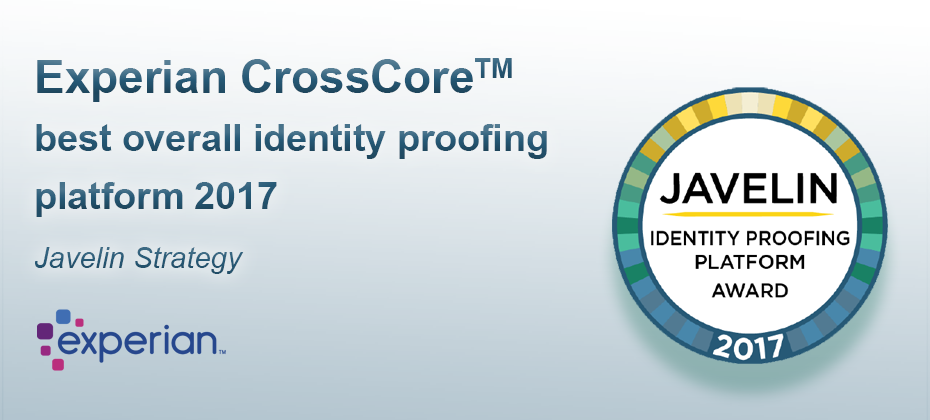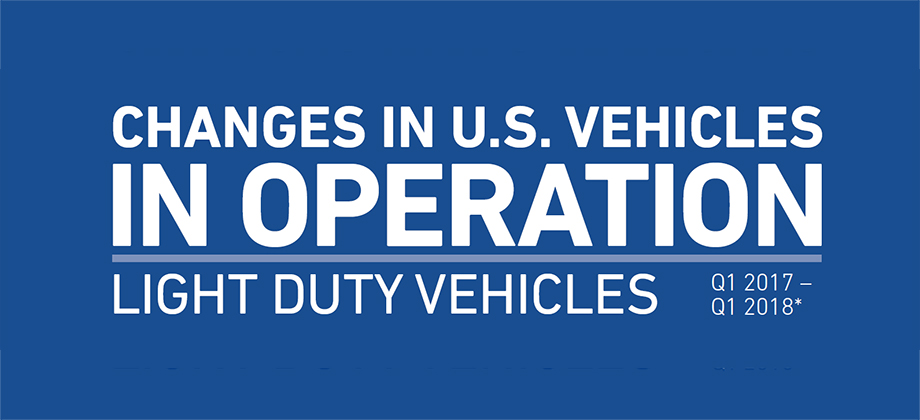Tag: Experian

Millennials have been accused of “killing” a lot of things. From napkins and fabric softener to cable and golf, the generation which makes up the largest population of the United States (aka Gen Y) is cutting a lot of cords. Despite homeowning being listed as one of the notorious generational group’s casualties, it’s one area that millennials want to keep alive, according to recent statistics. In fact, a new Experian study revealed 86% of millennials believe that buying a house is a good financial investment. However, only 15% have a mortgage today. One explanation for this gap may be that they appear too risky. Younger millennials (age 22-28) have an average near prime score of 652 and older millennials (age 29-35) have a prime score of 665. Both subsets fall below the average VantageScore® credit score* of U.S. consumers – 677. Yes, with the majority of millennials having near prime or worse credit scores, we can agree that they will need need to improve their financial hygiene to improve their overall credit rankings. But their dreams of homeownership have not yet been dashed. Seemingly high aspirations (of homeownership), disrupted by a reality of limited assets, low scores, and thin credit files, create a disconnect that suggests a lack of resources to get into their first homes – rather than a lack of interest. Or, maybe not. Maybe, after surviving a few first-time credit benders that followed soon after opening the floodgates to credit, millennials feel like the combination of low scores and the inability to get any credit is only salt in their wounds from their lending growing pains. Or maybe it’s all the student loans. Or maybe it’s the fact that so many of them are underemployed. But maybe there’s still more to the story. This emerging generation is known for having high expectations for change and better frictionless experiences in all areas of their life. It turns out, their borrowing behavior is no different. Recent research by Experian reveals consumers who use alternative financial services (AFS) are 11 years younger on average than those that do not. What’s the attraction? Financial technology companies have contributed to the explosive growth of AFS lenders and millennials are attracted to those online interactions. The problem is many of these trades are alternative finance products and are not reported to traditional credit bureaus. This means they do nothing to build credit experience in the eyes of traditional lenders and millennials with good credit history find it difficult to get access to credit well into their 20s. Alternative credit data provides a deeper dive into consumers, revealing their transactions and ability to pay as evidenced by alternative finance data, rental, utility and telecom payments. Alt data may make some millennials more favorable to lenders by revealing that their three-digit credit score (or lack there of) may not be indicative of their financial stability. By incorporating alternative financial services data (think convenient, tech-forward lenders that check all the boxes for bank removed millennials, not just payday loan recipients), credit-challenged millennials have a chance at earning recognition for their experience with alternative financial services that may help them get their first mortgage. Society may have preconceived notions about millennials, but lenders may want to consider giving them a second look when it comes to determining creditworthiness. In a national Experian survey, 53% of consumers said they believe some of these alternative sources would have a positive effect on their credit score. We all grow up sometime and as our needs change, there may come a day when millennials need more traditional financial services. Lenders who take a traditional view of risk may miss out on opportunities that alternative credit data brings to light. As lending continues to evolve, combining both traditional credit scores and alternative credit data appears to offer a potentially sweet (or rather, home sweet home) solution for you and your customers. *Calculated on the VantageScore® credit score model. Your VantageScore® credit score from Experian indicates your credit risk level and is not used by all lenders, so don't be surprised if your lender uses a score that's different from your VantageScore® credit score.

Trivia question: Millennials don’t purchase new vehicles. True or False?

In our previous post, we talked about Experian’s 2018 Attribution Study. This study is a wide-ranging, dealer-focused sales-driven attribution study to answer the question of what drives sales. Three takeaways were formed and the first was looking at shopper behavior instead of isolated KPIs. Now, we look at the second and third takeaways. Optimize your paid advertising Paid search is an important part of dealership marketing and precise targeting will help with both traffic and purchasing rate. Branded search drives quality traffic to websites. 7% of all traffic and 12% of HVU traffic comes from branded search. Along with traffic, the purchase rate was found to be 54% higher than average. In terms of value, New Make and Model has impressive results. 2% of all traffic and 12% of HVU traffic comes from New Make and Model. The purchase rate is 137% higher than average. Of note, we found that in order to optimize paid search to drive sales, you must buy your own name. 100% of dealers studied had buyers via branded search. With that, optimized “New Make Model” campaigns are crucial. 82% of dealers had buyers come through Make Model keywords. Traditionally, New Make Model would just create a higher funnel but since we are in the digital age, this does not happen anymore. Some participating dealers spent <20% of search budget on New Make Model campaigns. A key point is that no dealer had buyers come through via competitors’ keywords. As for a dealer’s website, display leasing offers and content for buyers since many search queries contained lease keywords. Although paid search is important, there are other channels to optimize and segmentation is key. This study found that conquesting with bulk email-blasts is not effective. You can achieve better email marketing results by targeting shoppers more intelligently and using quality lists. CRM-driven loyalty campaigns performed well in this segment. Display campaigns revealed that social media is no longer just for posting content but paid social advertising campaigns were effective. In fact, this study found Facebook display to be more effective than Google and other display networks. The reason is it is easier to segment and target a specific audience through Facebook. Google is more difficult to segment and has too many set-it-and-forget-it campaigns. Evaluate your third-party investments This brings us to third-parties, such as Automotive Shopping Portals and other lead providers. Performance with third-parties can vary and dealers should evaluate third-party performance as it relates to your sales. The third-party buy rate was under-indexed for dealers versus all sales. The business model for third-parties is not focused on driving traffic to dealer sites. Since there are so many vehicles listed on third-party sites from franchises, independent dealers, and private parties, there is a lot of “noise” for customers to sift through. For dealers, finding out what drives sales has led to Experian's 2018 Attribution. Our wide-ranging, dealer focused sales-driven attribution study focused on key variables and delivers three recommendations: Focus on website shopper behavioral metrics to drive sales. optimize paid search, specifically branded search and new make model campaigns. and evaluate third-party performance as it relates to your sales. With these, a dealer can be more confidant with their marketing and their data.

Data driven insights about your marketplace are critical to your success. For instance, data can be used to determine if your customers are loyal or if they are likely to defect to another dealership. According to Experian research, there were 54 million consumer vehicle sales transactions in 2017. While that may sound great, not all returning buyers are loyal. In fact, we found that three out of four people are not dealer loyal. Even though only ¼ of a dealer’s customer base regularly return, the remaining ¾ can be conquested. 41 million non-dealer loyal vehicle sales happened in 2017, meaning there were 41 million chances to conquest for dealers across the country. You may be asking yourself “that’s interesting, but how do I win?”. Start with best in class data. At Experian, we work with our North American Vehicle Database℠, File One℠ Credit Database, and Consumer View℠ Marketing Database. These databases have information including the history of 900 million vehicles in the United States and Canada, 10 billion vehicle history records, to consumer data about credit inquiries and data attributes for consumers and households. Figuring out how to increase customer loyalty and conquesting becomes simple once you consider Experian’s solution: Auto HyperConnect™. Auto HyperConnect is the answer to the question of “how do I use my data to win my market?” Our Auto HyperConnect suite includes two different products. The first is Auto HyperMonitoring™ which improves customer loyalty. The second is Auto HyperTargeting™, which offers four different ways to conquest vehicle owners: through owners/service, expired leases, off-loan, and current vehicle equity. Since there is a lot to talk about regarding conquesting vehicle owners, this will be a basic overview and we will go into detail later. Experian goes beyond providing quality data to our clients- we are your partner in the discovery of critical information to drive your success. The first step in our Auto HyperTargeting methodology starts with discovery - working with an Experian Automotive representative to create the most effective conquest strategy. After that, quantify and understand what data is available and how similar records have performed historically. Next, execute the strategy by launching campaigns to communicate with prospective customers via direct mail, email, and phone, etc. Finally, measure and track results with quarterly marketing attribution reporting with Experian’s Auto Response Analysis With Auto HyperTargeting, these six product benefits help it to stand apart from the competition: Highly targeted audiences and attributes lists closely fit prospecting profiles. These profiles include geography, vehicle make, vehicle class, and lease maturity data. Append 1,500+ demographic attributes, 650+ psychographics, and 70+ Mosaic segments. Complete, accurate, and actionable data is delivered timely. Data derived from the source with proprietary processes ensure that it’s the highest quality and best coverage. Flexible marketing execution has no firm offer of credit required and customizable messaging for relevancy. Full visibility performance tracking has closed loop ARAs delivered quarterly with performance details. Performance driven audience hyper targeting approach gets dealers the closest to the customer as possible while saving time and money. Focusing on marketing strategy and tactics delivers results and eliminates waste from unproductive volume/cost opportunities. Finally, the competitive advantage takes market share away from the competition by identifying, engaging, and converting the right prospects. Briefly, here are the four different types of conquesting a dealer can do with Auto HyperTargeting: Expired Lease lets a dealer conquest new prospects based on customized input criteria including zip codes, vehicle makes and classes, and lease maturity data with the marketing flexibility necessary to drive engagement and win new customers. There is no firm offer of credit required. Vehicle Owners lets a dealer engage with current owners to enable new relationships and opportunities. These opportunities reach out to service and parts, aftermarket accessories, new/used car, warranty, insurance, and financial services. Vehicle Equity identifies, engages, and acquires new customers with positive vehicle equity status and maximizes sales opportunities. Getting consumers into a new vehicle, into re-finance solutions, into new loans, and get third party offers in front of consumers are all apart of vehicle equity. End of Loan connects dealers with consumers who are reaching the end of their loan term and help them transition into their new vehicle of choice. These include customized offers, getting consumers into a new vehicle, getting consumers into new loans, and getting third party offers in front of consumers. Juggling the requirements to both maintain customer loyalty and conquest for new ones can be difficult, but our Auto HyperConnect suite helps dealers to succeed at both. In our upcoming mini-series on conquesting with Auto HyperTargeting, we will detail it’s four core capabilities in more detail to help dealers to conquest with confidence.

When sales are going relatively well, do you immediately look to conquesting? Are your key vendors encouraging you to do so? There’s absolutely nothing wrong with being out to conquer the world. No matter how you define conquesting – stealing market share from your competitors on their turf, making inroads on a cross-shopped make, or expanding your sales radius – chances are, you shouldn’t be focused on doing it. At least not until you’ve created some high barriers to prevent competitors from encroaching into your territory. Luckily, it’s easy to know when to stop conquesting and start getting defensive. All you need to answer is one simple question: Do you own your backyard? Even when it feels like all is going well in terms of sales and market penetration, it’s worth taking another look. You might be doing lots of volume in your immediate vicinity, but still be missing out on a lot of potential sales that are going to your competitors. We suggest that most dealers shouldn’t be happy with anything less than 90% market share of new, on-make models in surrounding ZIP Codes™. If you’re not regularly tracking your “backyard” market share, it’s a good practice to get in. Here’s why you should care about totally shutting out the competition in your local area: You’ve got physical brand presence. Buyers in your ZIP code and the surrounding towns drive by your sign every day. Your name should be the first they that comes to mind when they think of your make. You should own hometown SEO. Do you own search terms like “Honda dealers in Lakeland”? If you’re not the number one organic search result for your town, you’ve got some work to do. These are your most likely service customers. Every local deal you walk away from is a potential – and profitable – service customer lost. If you don’t own your backyard, what should you do about it? Aside from making sure you’ve got your SEO and SEM in good shape, it may well be an inventory problem: Are you stocking the models that buyers in your area are looking for? Here’s where looking at data from outside your four walls can be helpful. Demand data which aggregates online search activity to determine what models shoppers are likely to be buying in the next six weeks – can be a great resource to determine what’s going to be hot. This can certainly assist you in acquiring in-demand used inventory, and while you don’t always have control over your new allocations, a grasp of local purchase trends can help you figure out where and how to successfully market the models you do have on your lot. You may find that one or two problem models are dragging down your total market share – either because you have a large volume of them in stock and they aren’t moving, or they are hot sellers and you don’t have enough of them to meet demand. Once you’ve got the basics covered and you’ve identified any inventory gaps, let’s get granular about your strategy to dominate market share. A great way to do that is to look at the models and zip codes where you’re losing market share, starting with your bread and butter models. Dig in and look at your market share, by ZIP code, for each of your high-volume models. If you’re well under that 90% threshold on Focuses or 3-series, for example, that’s a good place to start targeting your marketing efforts in your backyard. So how do you sell more cars into the Zip codes you’ve identified? By understanding the prospective buyers of your chosen model and laser-targeting your marketing to appeal to them. Demographic data from the likes of Experian Automotive can provide a rich array of details on the values and preferences of buyers who are most likely to be interested in your specific vehicles. From the advertising channels that reach them, to the types of offers and benefits they prefer to hear about, there’s a plethora of valuable information available to inform successful campaigns. Armed with this data, it’s possible to hone your messaging to appeal to those individual buyers, especially when undertaking campaigns that can be targeted down to the ZIP code level, such as PPC and direct mail. If you’re not already buying your PPC by ZIP code, and creating model-specific landing pages with customized messaging for each area, we highly recommend it for a dramatic effect on conversion. We’ve seen rates rise from 2% to 8%, and inventory engagement rates rise from 50 to 90%, just by employing these techniques. By employing your marketing dollars more strategically and creating messaging that better resonates with consumers, you’ll be well on your way to consistently achieving dominant market share in your own backyard. But once accomplished, the work is not done! Be sure to experiment with conquesting against competitive makes – and do so in a controlled and measurable way. Here are some considerations as you set your strategy: Choose just one make to take on… but avoid conventional wisdom. If you’re a Honda dealer, conventional wisdom says conquest Toyota – since they consistently show up in the list of cross-shopped makes for Honda, regardless of market. But Toyota buyers are highly loyal… how much are you going to have to spend to convince them to leave their tried and true models? Why not go after Kia or Hyundai instead? Stick with your bread and butter models. You might be all excited about that shipment of new electric vehicles you just got in stock, but those “specialty” buyers are going to seek you out. For the highest impact, spend your conquesting dollars where you’re doing the most volume. For example, , if you’re a BMW dealer, put your 3-series up against the Lexus IS. Choose 3-4 ZIP codes in your PMA where demand is highest. It may be tempting to try to lure buyers who are farther afield, but you are more likely to lose on the front and back end of every sale that’s over 20 miles from your dealership. Remember, we’re looking for buyers that are easy to lure and have a good shot at becoming loyal service customers These techniques can be used persistently to ensure that you own your backyard, dominate your PMA and steal market share from your competitors. All it takes is knowledge of your market. Your gut will lead you in the right direction most of the time, but look at the data to verify your instinct, and be open to being surprised. Take the time to wait for results before moving on to the next campaign. You’re guaranteed to learn something that will make you better next time. And there’s no need to go it alone. All this data and the accompanying visualizations can be found in Experian’s Dealer Positioning System®, or DPS, a dealership intelligence platform created expressly for auto retail. The DPS can surface recommendations on the models and ZIP Codes with the most opportunity, and a monthly Market Guidance call with one of our Performance Managers who can help you crystallize your strategy, track results, and hold you and your extended team accountable. Experian also has a growing list of agency partners who use the DPS to help clients like you shape and execute on effective marketing and advertising campaigns.

For most businesses, the customer experience is at the heart of every strategy. Debt collection shouldn’t be different. Here’s why: 21% of visits to an online debt recovery system were made outside the traditional working hours of 8 a.m. to 8 p.m. Of the consumers who committed to a repayment plan, only 56% did so in a single visit. PricewaterhouseCoopers reported that 46% of consumers use only digital channels to conduct banking, avoiding traditional offline channels. Conversely, data collected by Gallup between 2013 and 2016 showed that 48% of American banking customers would only consider using a bank that offered physical branches. The debt collection process is an often-overlooked opportunity to build customer relationships and loyalty. Leverage data and technology to replace outdated approaches, minimize charge-offs and create environments that value each customer. Learn more>

Juniper Research recently recognized Experian as a Fraud Detection and Prevention Market Leader in its Online Payment Fraud Whitepaper. Juniper also shared important market insights in the report. The transactional value of card-not-present fraud is estimated to reach $19.3 billion in 2022. Online payment fraud is anticipated to grow 13.7% annually from 2017 to 2022. Digital banking fraud should reach $7.9 billion by 2022. $50.9 billion is expected to be spent on fraud detection and prevention software between 2017 and 2022. Fraud’s not going away anytime soon. Protecting your organization and customers is the new cost of doing business. Don’t wait until 2022 to start protecting yourself. Read the report>

The consumer economy has evolved dramatically over the past few years — in large part due to technology and access to large amounts of data. Credit data, especially, can be a powerful asset for financial institutions in this new environment. More than 88 million U.S. consumers use their smartphone to do some form of banking. 67% of consumers made purchases across multiple channels in the last six months. With the help of data scientists, financial institutions can build models that crunch huge volumes of data and append their own customer data to drive portfolio management, customer acquisition and collections decisions across digital and mobile channels. Learn more>

Big changes for the new year 2017 is expected to bring some big changes. But what do those changes mean for the financial services space? Here are 3 trends and twists Experian expects to occur over the next 12 months: Trump and the Republican-controlled Congress will move forward with a deregulatory agenda. Recognizing and scoring more previously invisible consumers through alternative data sources will be emphasized. Personalized credit offers delivered via multiple digital channels in a sequenced, trackable manner. What are your predictions for 2017? Only time will tell, but we’re certain that regulations and advancements in digital will be huuuge. >>More 2017 trends

As we kick off the new year, let’s take a look at some interesting things we learned about data quality in 2016. Our latest data quality report found some concerning statistics about companies and their data quality: 56% of organizations report losing sales opportunities due to bad data. 79% say data clearly ties directly to business objectives, but only 2% trust their data completely. 83% report that poor data quality impacts their business initiatives. Data is at the heart of your organization, and the quality of that data underpins the success of many of your business initiatives. Implementing a successful data quality program, therefore, is imperative to your organization’s future. Building a business case for data quality

Fraud and cybersecurity are two of the biggest risks challenging organizations and the economy today. Fraud has become its own industry, to the tune of $500 billion in estimated losses annually. To strengthen your fraud risk strategies, you need: A multilayered authentication and risk-based approach to prevent fraud. A comprehensive approach to identity with true customer intelligence. To avoid silos and recognize the value of combining your solutions into one platform. The rapid growth of fraud-related activity only reinforces the need for aggressive fraud prevention strategies and the adoption of new technology to prepare for the latest emerging cybersecurity threats. Want to know more?

At Experian, we’re proud to be the backbone of financial progress. We’re making sense of data and information in powerful new ways. For example, we are: Opening credit bureaus in developing countries, where access to credit was virtually non-existent. Finding new ways to help consumers better understand credit and how to impact their financial future. Protecting consumers from identity theft and businesses from fraud. Volunteering our time and expertise to improve the communities in which we live and work. We’re investing in the future, through new technologies, talented people and innovations – all of it to help create a better tomorrow. Want to know more?

Looking to score more consumers, but worried about increased risk? A recent VantageScore® LLC study found that consumers rendered “unscoreable” by commonly used credit scoring models are nearly identical in their financial and credit behavior to scoreable consumers. To get a more detailed financial portrait of the “expanded” population, credit files were supplemented with demographic and economic data. The study found: Consumers who scored above 620 using the VantageScore® credit score exhibited profiles of sufficient quality to justify mortgage loans on par with those of conventionally scoreable consumers. 3 to 2.5 million – a majority of the 3.4 million consumers categorized as potentially eligible for mortgages – demonstrated sufficient income to support a mortgage in their geographic areas. The findings demonstrate that the VantageScore® credit score is a scalable solution to expanding mortgage credit without relaxing credit standards should the FHFA and GSEs accept VantageScore® credit scores. Want to know more?

As we kick off the holiday shopping season, let’s look at the increasingly popular smart voice/artificial intelligent assistant. Here are some insights from a recent Experian survey on how consumers are using one such device: 9% use their Amazon Echo in the kitchen and 33.5% in the living room. Echo users are overwhelmingly satisfied with Alexa’s voice recognition interface — with 39% planning to use it more frequently. Top tasks asked of Alexa are set a timer, play a song, read the news, set an alarm, check the time and tell a joke. Devices that use voice and messaging can significantly increase the accessibilities and usability of applications for consumers. Do you have the right strategy in place to support these new technologies? >>View inforgraphic
